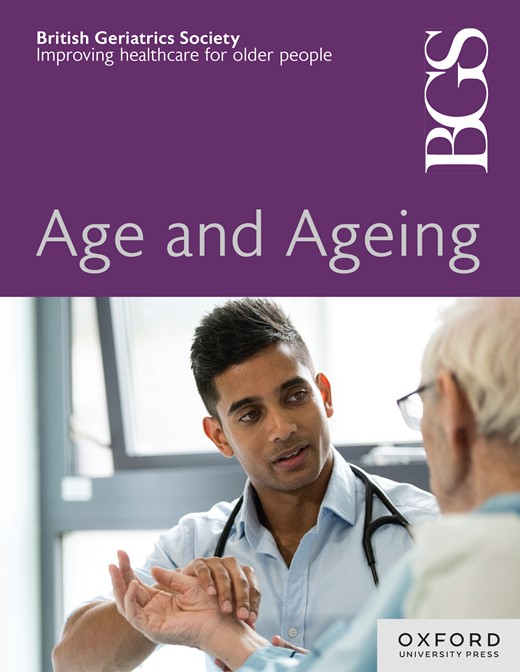空气污染与中老年人慢性疼痛的关系:一项全国性队列研究
IF 7.1
2区 医学
Q1 GERIATRICS & GERONTOLOGY
引用次数: 0
摘要
本研究旨在探讨中国中老年人慢性疼痛与NO2、O3、PM1、PM2.5和PM10之间的纵向关系。方法本队列研究纳入10 616名年龄≥45岁的中国受试者。在2011年至2020年期间,研究人员对参与者进行了五次随访。通过问卷调查确定慢性疼痛和受影响的部位。参与者和空气污染数据根据地理位置进行匹配。数据来自中国健康与退休纵向研究和中国高空气污染物数据集。调整混杂因素后,采用时变Cox模型探讨疼痛与污染物的关联。使用暴露-反应分析测试了空气污染物与一般疼痛风险之间的线性关系。根据受影响的身体部位进行亚组分析。多污染物模型用于探索污染物之间潜在的相互作用。结果NO2 (HR = 1.116, 95% CI: 1.051 ~ 1.186)、PM1 (HR = 1.185, 95% CI: 1.112 ~ 1.265)、PM2.5 (HR =1.122, 95% CI: 1.080 ~ 1.165)、PM10 (HR = 1.089, 95% CI: 1.062 ~ 1.117)每增加10 μg/m3,慢性疼痛风险分别增加11.6%、18.5%、12.2%、8.9%。O3显著增加慢性头痛的风险(HR = 1.018, 95%CI: 1.022 ~ 1.221)。腹痛和胸痛只与PM2.5有关。PM污染物抑制了NO2的作用,而O3对其他污染物的作用没有影响。结论多种空气污染物与慢性疼痛风险之间存在线性关联。这项研究强调了改善空气质量对健康老龄化的重要性。本文章由计算机程序翻译,如有差异,请以英文原文为准。
How air pollution relates to chronic pain in middle-aged and older adults: a Nationwide cohort study
Objectives This study aimed to investigate the longitudinal associations between chronic pain and NO2, O3, PM1, PM2.5 and PM10 amongst middle-aged and older Chinese adults. Methods This cohort study included 10 616 Chinese participants aged≥45 years. The participants were followed up in five waves between 2011 and 2020. Chronic pain and the affected sites were identified using questionnaires. Participants and air pollution data were matched based on geographic location. Data were obtained from the China Health and Retirement Longitudinal Study and China High Air Pollutants datasets. After adjustment for confounders, time-varying Cox models were used to explore the pain-pollutant association. The linear relationships between air pollutants and general pain risk were tested using exposure-response analysis. Subgroup analyses were conducted based on the affected body sites. Multi-pollutant models were used to explore potential interactions between pollutants. Results Every 10 μg/m3 increase in NO2 (HR = 1.116, 95% CI: 1.051 to 1.186), PM1 (HR = 1.185, 95% CI: 1.112 to 1.265), PM2.5 (HR =1.122, 95% CI: 1.080 to 1.165), and PM10 (HR = 1.089, 95% CI: 1.062 to 1.117) corresponded to a 11.6%, 18.5%, 12.2%, 8.9% higher risk of chronic pain, respectively. O3 significantly increased the risk of chronic headache (HR = 1.018, 95%CI: 1.022 to 1.221). Abdominal and chest pain was only associated with PM2.5. PM pollutants suppressed the effects of NO2, whereas O3 did not influence the effects of other pollutants. Conclusions There were linear associations between multiple air pollutants and the risk of chronic pain. This study emphasised the importance of improving air quality for healthy ageing.
求助全文
通过发布文献求助,成功后即可免费获取论文全文。
去求助
来源期刊

Age and ageing
医学-老年医学
CiteScore
9.20
自引率
6.00%
发文量
796
审稿时长
4-8 weeks
期刊介绍:
Age and Ageing is an international journal publishing refereed original articles and commissioned reviews on geriatric medicine and gerontology. Its range includes research on ageing and clinical, epidemiological, and psychological aspects of later life.
 求助内容:
求助内容: 应助结果提醒方式:
应助结果提醒方式:


